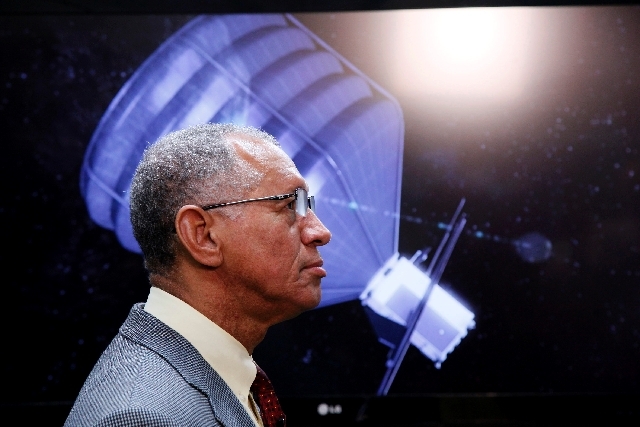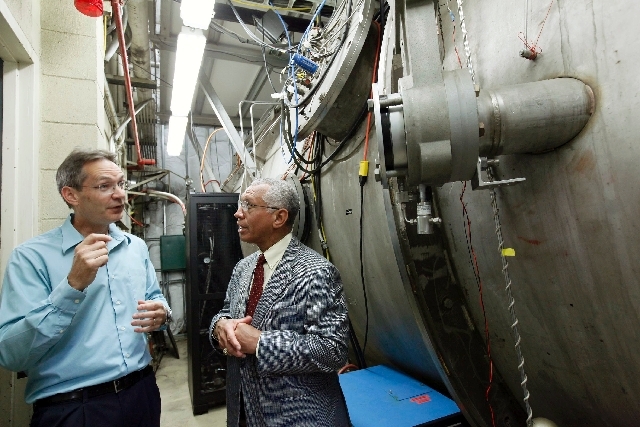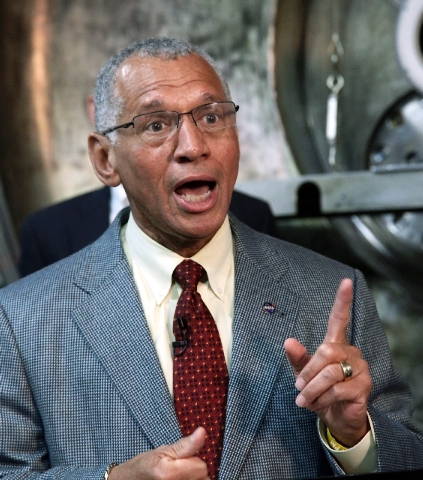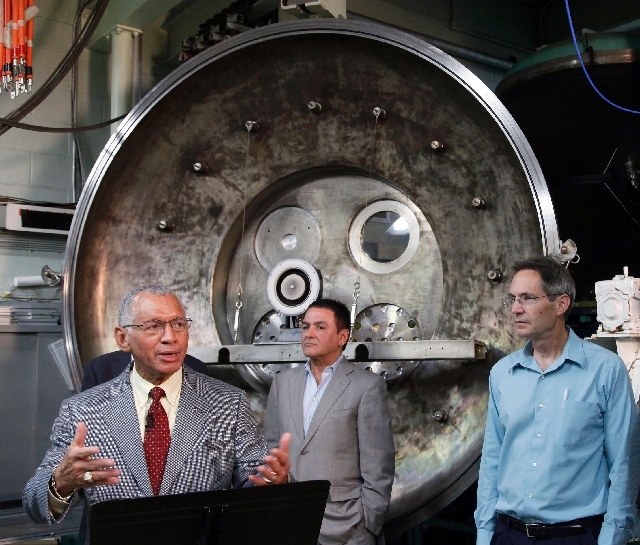NASA head views progress on asteroid lasso mission




PASADENA, Calif. — Surrounded by engineers, NASA chief Charles Bolden inspected a prototype spacecraft engine that could power an audacious mission to lasso an asteroid and tow it closer to Earth for astronauts to explore.
Bolden checked on the progress Thursday a month after the Obama administration unveiled its 2014 budget that proposes $105 million to jumpstart the mission, which may eventually cost more than $2.6 billion.
Engineers at the Jet Propulsion Laboratory in Southern California and Glenn Research Center in Ohio are developing a thruster that relies on ion propulsion instead of conventional chemical fuel.
Once relegated to science fiction, ion propulsion – which fires beams of electrically charged atoms to propel a spacecraft – is preferred for deep space cruising because it’s more fuel-efficient. Engine testing is expected to ramp up next year.
During his visit to the JPL campus, nestled in the foothills of the San Gabriel Mountains northeast of Los Angeles, Bolden viewed an engineering model of the engine and peered through a porthole of a vacuum chamber housing the prototype.
NASA is under White House orders to fly humans to an asteroid as a stepping stone to Mars. Instead of sending astronauts to the asteroid belt between Mars and Jupiter, as originally planned, the space agency came up with a quicker, cheaper idea: Haul the asteroid close to the moon and visit it there.
Bolden said the original concept was impractical given the flat budget and praised the alternative as “ingenious.”
“If you can’t get to the asteroid, bring the asteroid to you,” Bolden said.
The space agency would launch an ion-powered unmanned spacecraft to snare a yet-to-be-selected small asteroid in 2019 and park it in the moon’s neighborhood. Then a spacewalking team would hop on an Orion space capsule that’s currently under development and explore the rock in 2021.
Besides preparing astronauts for an eventual trip to Mars, NASA said the asteroid-capture mission is designed to test technologies to deflect threatening space boulders on a collision course with Earth.
“Anytime that you can get up close to an asteroid and understand its composition and its characteristics … that’s getting to know the enemy,” said Don Yeomans, who heads NASA’s Near Earth Object Program at JPL.
Scientists have a dozen potential small asteroids in mind for the mission, but Yeomans said more observations are needed before settling on a target. Whatever asteroid NASA chooses to redirect, it won’t pose a threat to Earth because it would burn up if it inadvertently plunged through the atmosphere, scientists said.
Bolden’s JPL stop is part of his annual spring tour of NASA centers around the country. His California journey began Wednesday at the Dryden Flight Research Center in the Mojave Desert where Sierra Nevada Corp. is preparing its Dream Chaser spaceship for test flights later this year before it can make supply runs to the International Space Station. On Friday, Bolden was set to visit the Ames Research Center in the Silicon Valley where engineers are working on various space technologies.












